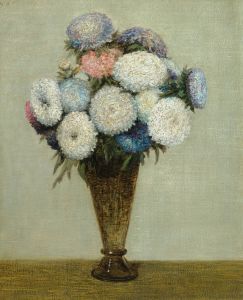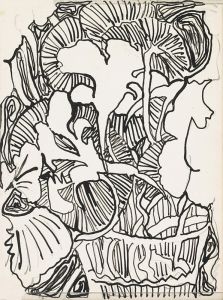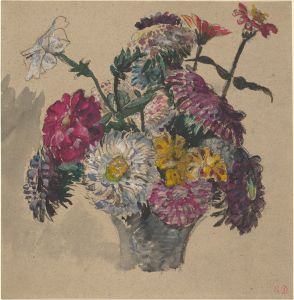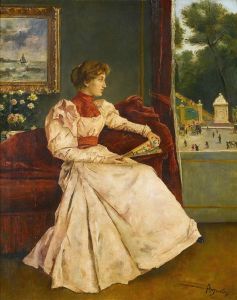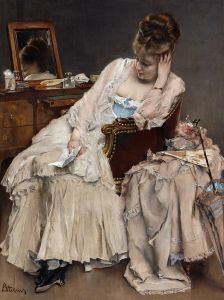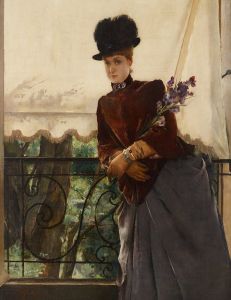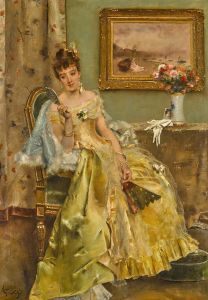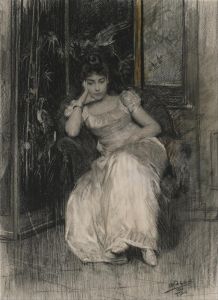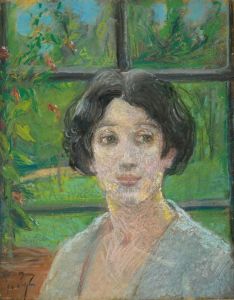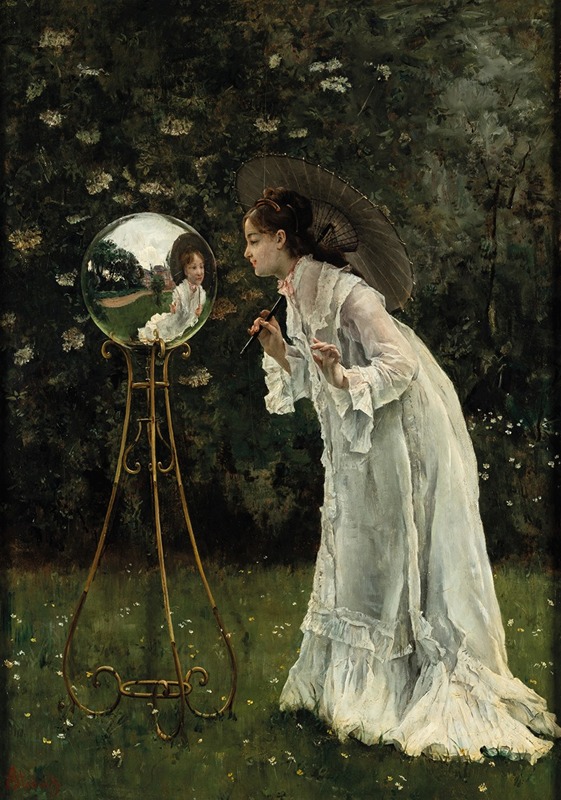
La Boule Argentée
A hand-painted replica of Alfred Stevens’s masterpiece La Boule Argentée, meticulously crafted by professional artists to capture the true essence of the original. Each piece is created with museum-quality canvas and rare mineral pigments, carefully painted by experienced artists with delicate brushstrokes and rich, layered colors to perfectly recreate the texture of the original artwork. Unlike machine-printed reproductions, this hand-painted version brings the painting to life, infused with the artist’s emotions and skill in every stroke. Whether for personal collection or home decoration, it instantly elevates the artistic atmosphere of any space.
"La Boule Argentée" (The Silver Ball) is a painting by the Belgian artist Alfred Stevens, created in 1881. Alfred Stevens, born in Brussels in 1823, was a prominent painter known for his detailed and elegant depictions of women, often set in luxurious interiors. His works are celebrated for their meticulous attention to detail and the sophisticated portrayal of contemporary fashion and domestic life.
"La Boule Argentée" exemplifies Stevens' mastery in capturing the subtleties of light and texture. The painting features a young woman dressed in an elaborate gown, seated in an opulent interior. She is holding a silver ball, which reflects the surrounding room, adding a layer of complexity and intrigue to the composition. The reflective surface of the ball showcases Stevens' skill in rendering different materials and his interest in the play of light and reflection.
The setting of the painting is typical of Stevens' work, characterized by richly decorated interiors that reflect the tastes and styles of the late 19th century. The attention to detail in the furnishings, fabrics, and accessories highlights Stevens' ability to create a sense of realism and depth. The woman's attire, with its intricate lace and sumptuous fabrics, is indicative of the fashion of the time and underscores Stevens' interest in contemporary dress.
Stevens' work often explored themes of femininity and the roles of women in society. "La Boule Argentée" can be seen as a continuation of this exploration, presenting a moment of introspection and quiet elegance. The reflective ball may symbolize self-reflection or the inner world of the subject, adding a layer of psychological depth to the painting.
Alfred Stevens was a contemporary of other notable artists such as James McNeill Whistler and Édouard Manet, and he was well-regarded in both Belgium and France. His works were exhibited in major salons and he received numerous accolades throughout his career. "La Boule Argentée" is a testament to his skill and his ability to capture the essence of his subjects with grace and precision.
Today, "La Boule Argentée" is part of the collection at the Musée d'Orsay in Paris, which houses many of Stevens' works. The painting continues to be admired for its technical brilliance and its evocative portrayal of a moment in time. Alfred Stevens remains an important figure in the history of 19th-century art, and "La Boule Argentée" is a fine example of his contribution to the genre of portrait painting.






